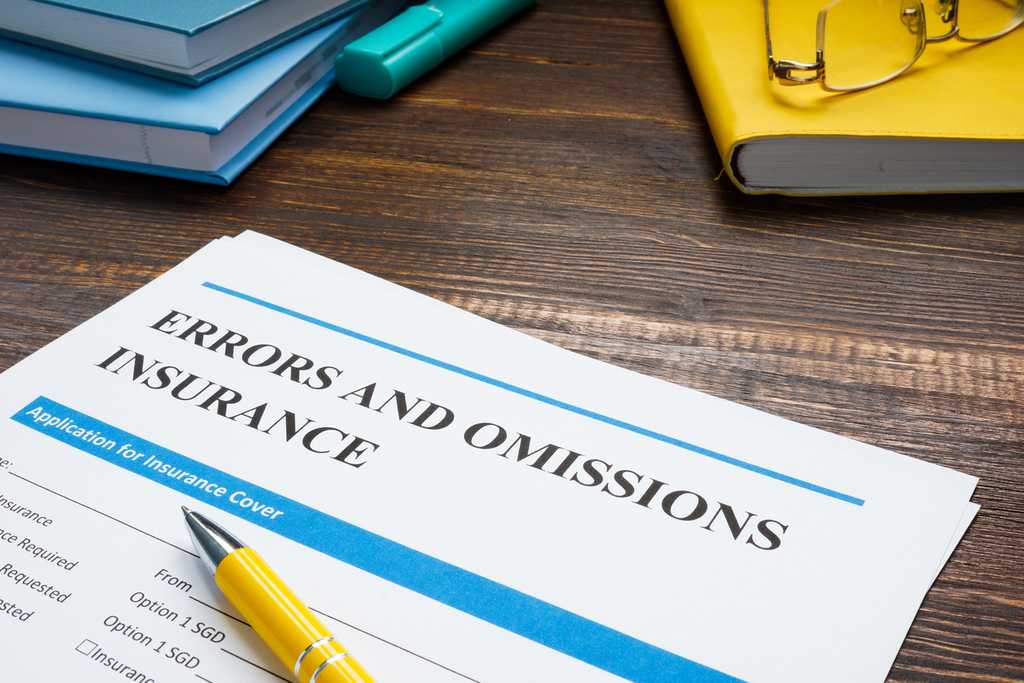Errors and Omissions (E&O) insurance is for businesses that provide professional advice and services. If you own such a business and are sued by a client who claims you made a mistake, your E&O insurance helps cover the costs related to the lawsuit. These costs can be so high that they could otherwise put your business at risk of bankruptcy and closing.
Lawsuits are expensive, but there is a way to protect your business
According to a recent article by the U.S. Chamber of Commerce, American companies spend an average of $1.2 million per year fighting lawsuits — even though many of those suits have no merit. And with the number of lawsuits growing year-over-year, this average stands to grow.
The bottom line? If you run a business, you’re at risk of being sued. And if you or your employees provide professional advice or services, you’re at risk of a client suing you for E&O. Even if that lawsuit is without merit, just fighting it could cost your business dearly.
This risk is why E&O insurance is part of many business insurance portfolios. You may want to consider it for your own business.
What does errors and omissions insurance (E&O) cover?
An E&O insurance policy provides financial protection from lawsuits based on any of the following claims against your business:
- Errors or oversights in your services
- Budget overruns
- Negligence
- Inaccurate advice
- Incomplete work and missed deadlines
- Breach of contract
- Misrepresentation
- Failure to meet a client’s reasonable expectations, contractual obligations, or standards of your industry
If a client sues you for one of the reasons listed above, your E&O insurance policy helps cover expenses such as:
- Attorney fees
- Court costs
- Administrative costs
- Settlements and judgments
- Damages owed
The insurance company pays for these expenses up to the limit of liability for your policy. Your business is responsible for any amount above that limit.
Your E&O insurance provider may provide additional services, such as helping you find a qualified attorney who specializes in these types of lawsuits. Your policy contract should specify what services are included.
E&O insurance scenarios
Here are a few examples of business situations that could lead to an E&O lawsuit.
- A financial advisor counsels a client to purchase shares in a promising stock. The stock ends up performing poorly. The client sues the advisor.
- An insurance agent sells a homeowners policy but never learns about — and thus doesn’t insure — the client’s expensive art collection. A fire destroys the art collection, but the loss is not covered under the homeowners policy’s standard personal property coverage. The client sues the insurance agent.
- A certified public accountant makes an error on a tax return. The error results in the client having to pay a steep penalty. The client sues the accountant.
- An interior designer installs a style of granite countertop that the homeowner decides he doesn't like. The homeowner demands the designer swap it for a different style, but the designer refuses to do so without additional compensation. The homeowner sues the designer.
- An IT firm promises to complete work on a firmware update for a client’s product by a specified date. Unforeseen circumstances cause a delay in the project, and the IT firm misses the deadline. The client sues the IT firm.
Note that while these scenarios could arise from actual negligence, many could also occur from simple mistakes, misunderstandings, and miscommunications. Remember that whether or not a lawsuit has merit, it can be very costly.
What does errors and omissions Insurance (E&O) insurance not cover?
E&O policies exclude acts such as criminal activity and purposeful wrongdoing. The policy contract should specify these exclusions. Be sure to review your contract carefully to understand what isn’t covered.
E&O insurance also doesn’t apply to specific situations covered by other types of business insurance. These include:
- Bodily injuries or property damage caused by your business. General liability (GL) insurance usually covers these incidents.
- Employee injuries or illnesses sustained on the job. Workers’ compensation should provide coverage for these incidents.
- Damage caused by data leaks. Your business’s cyber insurance applies instead.
- Employee claims of discrimination or harassment. Employee practices liability insurance (EPLI) provides coverage for these.
As stated earlier, E&O insurance is typically part of a broad portfolio of coverage designed to protect a business. If you own a business, it's crucial that you discuss your needs with your insurance company or agent to ensure you have the protection you need
How much does errors and omissions (E&O) insurance cost?
According to The Hartford, an insurance company, E&O insurance costs an estimated $500 to $1,000 per employee, per year. Based on those figures, if your company has 25 employees, you’ll pay $12,500 to $25,000 annually.
The insurance company uses several factors to determine the cost of your E&O insurance policy. These include your business risk (costs are higher if you work in an industry with higher E&O risk), your location, your chosen coverage limits, your number of employees, and your business’ claims history.
Who needs errors and omissions (E&O) insurance?
Many types of businesses — from professional advisors to home remodelers — may be at risk of E&O lawsuits. Examples include:
- Accountants
- Advertising and marketing firms
- Architects
- Consulting firms
- Engineering firms
- Financial advisors
- Graphic designers
- Health and beauty services (e.g., barbershops and salons)
- Interior designers
- Insurance agents and brokers
- IT firms and website developers
- Personal trainers
- Printing and publishing companies
- Real estate agents
- Travel agents
- Veterinary services
- Wedding planners
If your business provides advice or services to customers for a fee, you should consider E&O insurance. Many licensing boards and some state laws require coverage for certain professions.
E&O insurance mitigates the ruinous effect of lawsuits
The risk of lawsuits is an unfortunate part of running a business. The good news is that insurance exists to mitigate the ruinous effects of these suits. E&O insurance is one such type of coverage. It protects your business from the financial consequences of being sued for mistakes.

